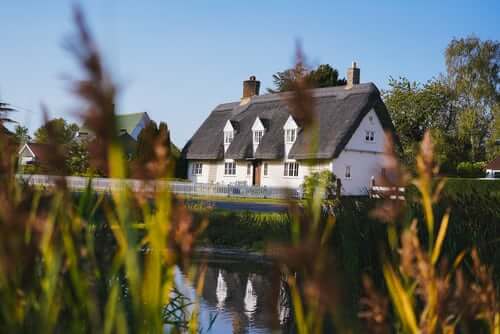There are a number of different stages that go into self-building a property. Despite any preconceptions you may have, self-building does not have to mean physically laying the bricks or digging the foundations yourself. Whether you are looking to carry out the project on a DIY basis, or looking to take a more managerial-type role; outsourcing your builders and materials, there are a variety of different routes you can take with self-building a property.
Regardless of how you go about it, self-building properties is a process that will always require careful consideration and thorough planning. When done correctly, this process can come with some great benefits, enabling you to tailor a property perfectly to your design and lifestyle needs as well as creating a well-insulated and energy efficient property with good building acoustics for the future.
Financing a Self-Build
One of the first things to consider when planning your self-build project is how you intend to finance it. You will need money to fund most, if not all stages of the project, all the way from buying the plot of land for the property to be built on to making the final touches once built.
You may have savings that will cover the whole cost of the project, in which case you won’t need to worry too much about financing. However, for those who are not able to fund the project straight from their own pocket, there are a range of different finance options out there which can help you to spread out the cost of this.
Self-Build Finance Options
A self-build mortgage, sometimes referred to as ‘self-build finance,’ can be a great type of finance to consider for a self-build project. Unlike with regular residential mortgages, a self-build mortgage is designed to help finance self-build projects, providing funds to help in the building stages of a property rather than the purchase of a pre-existing property.
Self-build mortgages provide finance for such a project in set stages, funding the project as and when it progresses. Self-build mortgages are provided in this way to reduce the lender’s risk, only providing funds as the set developments are occurring rather than giving the whole loan out in one lump sum. This helps to ensure that the money will only be spent as the project is developing.
A key benefit of self-build finance over some other specialised forms of property finance is that it, like a typical first charge mortgage it is deemed a regulated mortgage contract. This means that unlike some forms of specialist property finance like bridging loans and development finance, regulations are that bit more favourable for borrowers.
Purchasing the Land
Another essential step in any self-building project is finding the land upon which you will build the property. When purchasing the land that you wish to build the property on, you will need to be aware of any and all planning laws and building regulations that will apply when building on this land; both locally and nationally and thus, you must abide by these regulations.
Foundations and Initial Phase
This stage involves preparing the land for the property to be built on it. It is the beginning of the building process, during which the foundations for the property are put in place. As in the previous stage, you will have to abide by any and all building regulations that apply to this process, ensuring that you have permission to create the foundations to the necessary specifications of the property.
Frame Erected / Wall Plate Level
During this stage, you will start to see the physical structure of your property take shape. The details for this stage in the self-build process will be dependent on what the property is made from, for example timber or ‘brick and block.’ This phase entails the literal framework of the property being put together, forming the entire basis for all of the property’s structure.
Filling in the Frame
Once the initial framework has been built, the next stage is to fill it in. Through this stage, the property’s external walls are constructed, helping to protect it from external elements. Also, during this stage, the ‘building envelope’ will begin to take shape and the practices utilised in this stage will have long-lasting effects for the property. It is likely at this stage that you will start looking at how to make the property acoustically sound and able to pass air and sound tests.
First Fix
During this stage the predominantly and entirely internal structures, as well as fixed aspects like built-in cupboards and some fixtures and fittings are put in place. This includes fitting in the internal walls, plumbing, gas and electrics, and making sure these all run correctly. During this stage the property starts to become liveable.
Second Fix
During the second fix, the property will become all but complete apart from a few finishing touches. Once this stage is complete, the project will be finished. It is also after this stage that you will need to arrange an air tightness test, as per Part L of UK Building Regulations. If you have used a self-build mortgage, once this stage is over and complete, the funding from the mortgage will come to an end.
Planning Your Self-Build Project Properly
Undertaking a self-build project can be incredibly exciting, enabling you to create a home quite literally from scratch, with your needs and wants in mind. However, when organising such a project, it is vital to plan out every step of the way carefully and sensibly.
Self-build finance can be a good option to consider if you don’t have savings to cover the cost of the project, so long as you are confident enough that you will be able to afford the repayments on it. As with other types of mortgages, self-build mortgages are usually secured on the property they help to finance. Therefore, if you cannot keep up with repayments on the mortgage, you could be at risk of losing the property.
It is therefore important to ensure that you can afford the project, as well as allowing for some additional money to cover any potentially unexpected costs that could arise. You should also of course account for all repayments that will follow once the property is complete.



